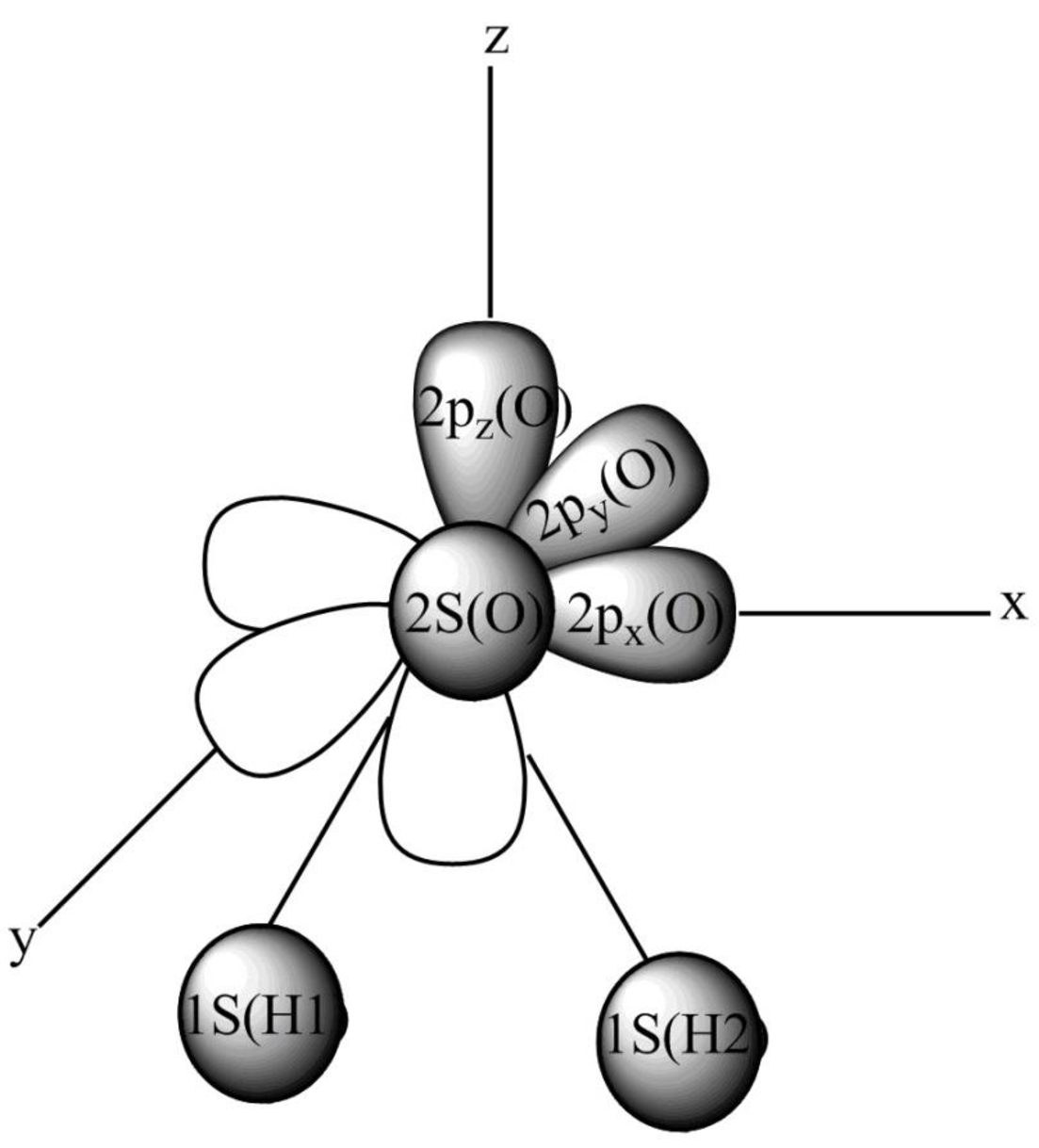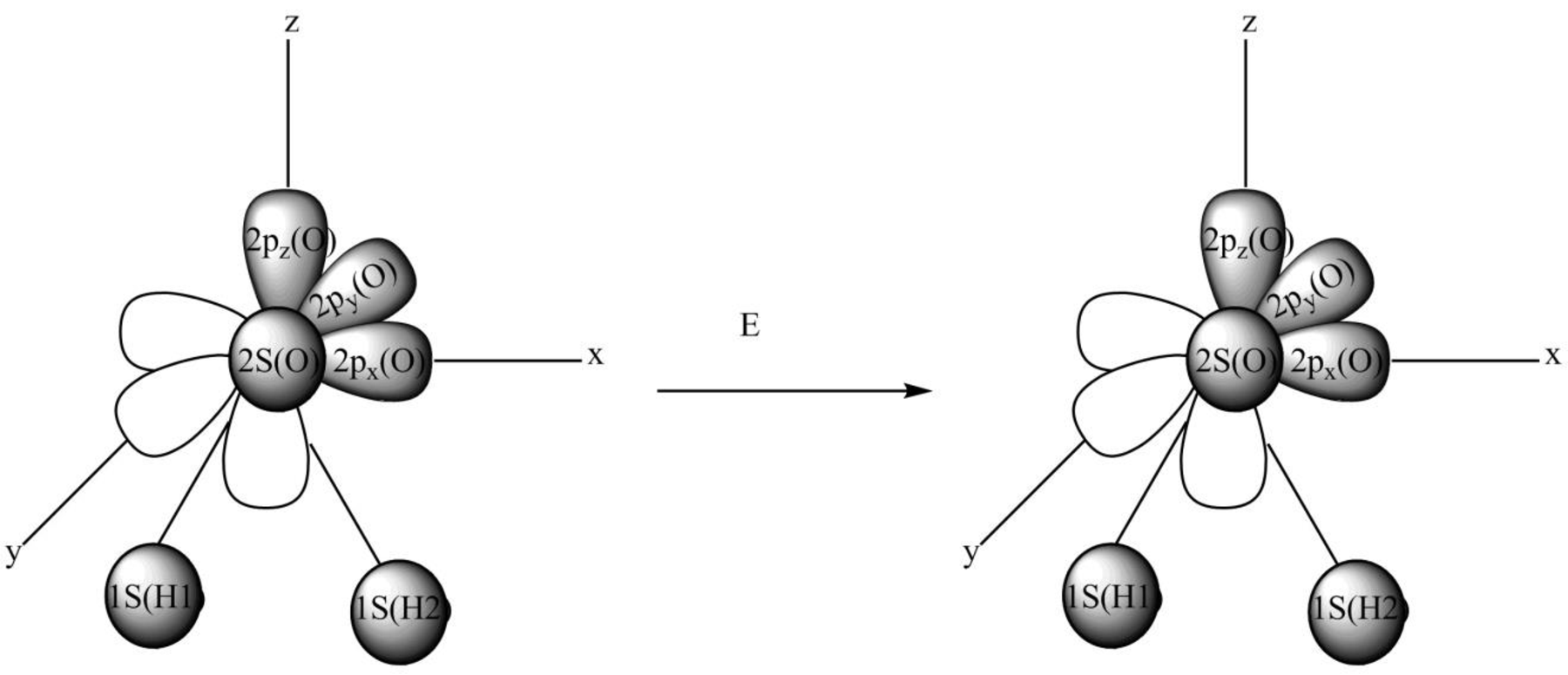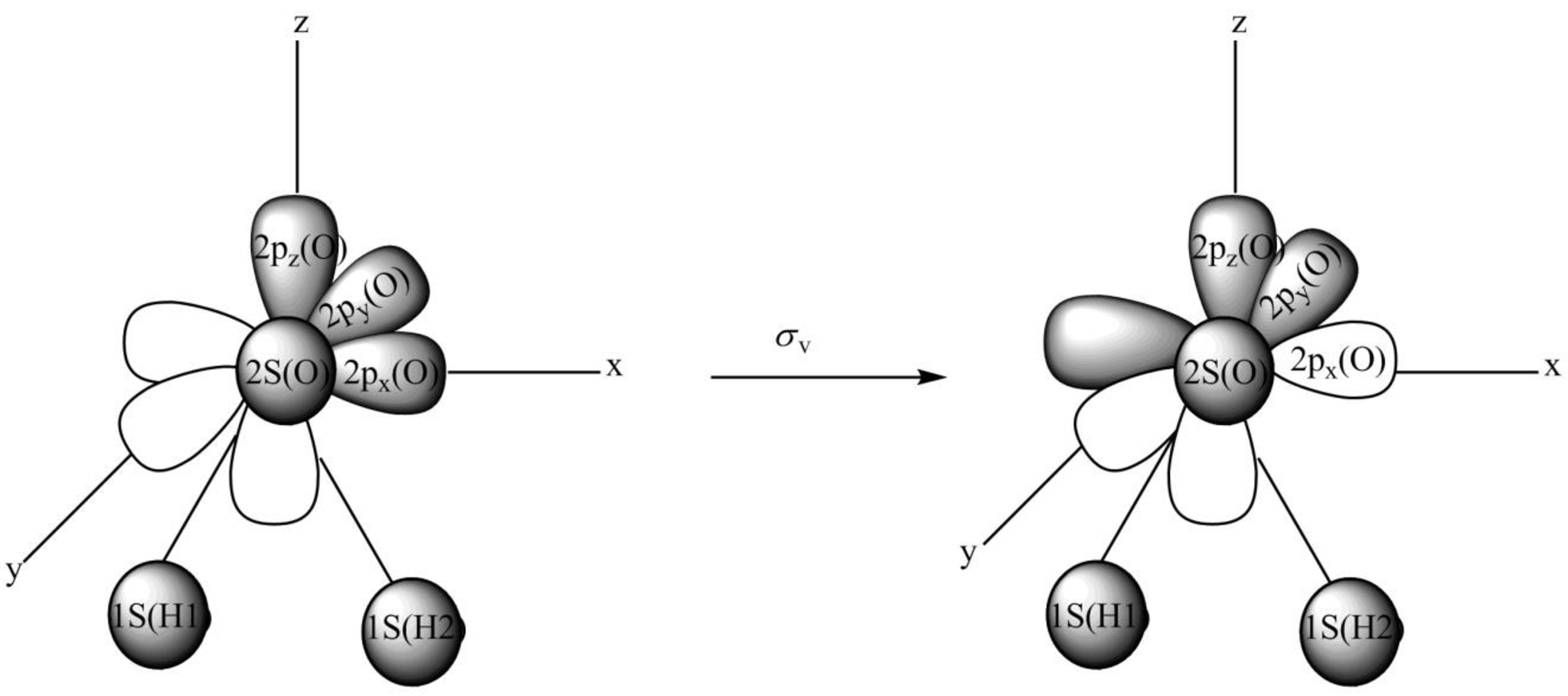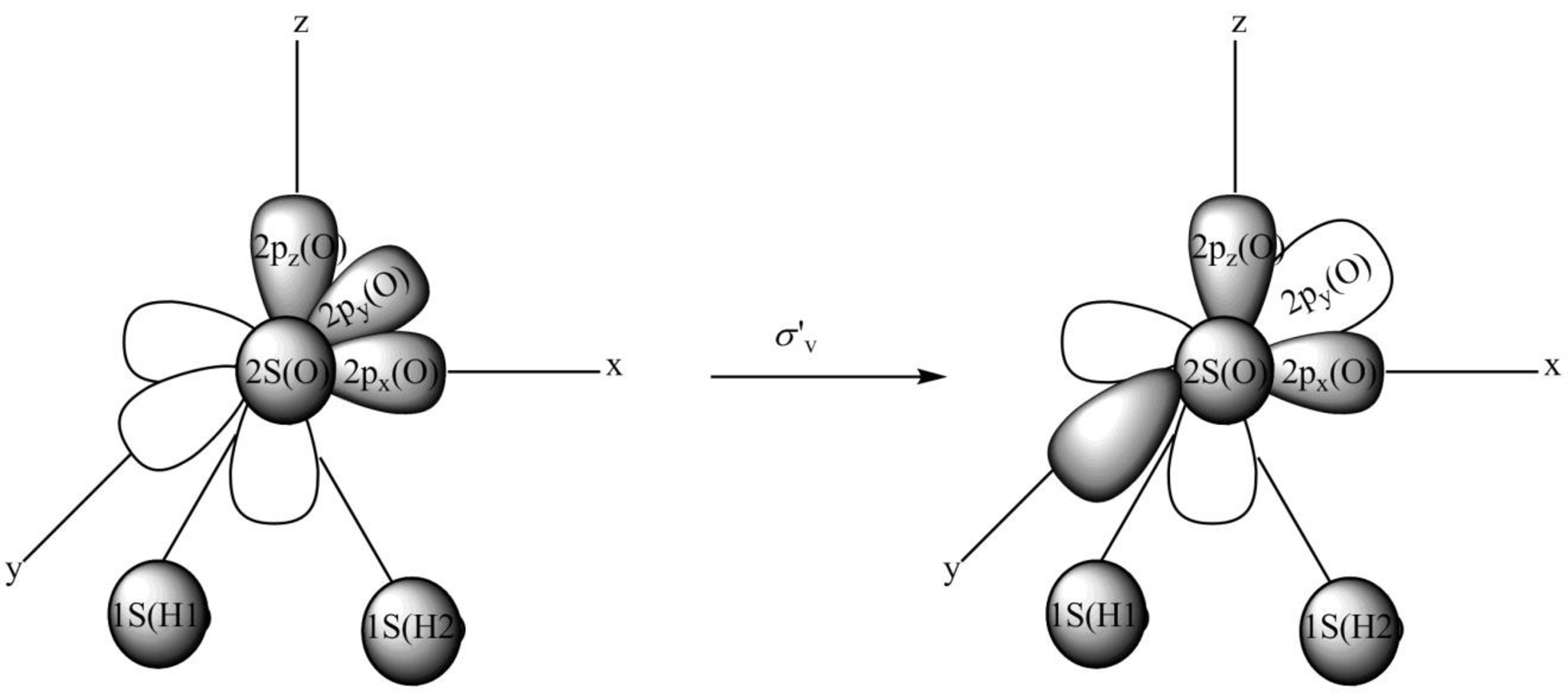
(a)
Interpretation:
The relation
Concept introduction:
A symmetry operation is defined as an action on an object to reproduce an arrangement using a symmetry argument. The spatial arrangement of the object remains identical after a symmetry operation. The point of reference through which a symmetry operation takes place is termed as a symmetry element.
(a)
Answer to Problem 10B.3P
The relation
Explanation of Solution
The water

Figure 1
The two
The

Figure 2
The changes taking place in the above operation are shown below
The above result is expressed as a matrix multiplication as shown below.
The identity operation
The

Figure 3
The changes taking place in the above operation are shown below
The above result is expressed as a matrix multiplication as shown below.
The
The

Figure 4
The changes taking place in the above operation are shown below
The above result is expressed as a matrix multiplication as shown below.
The
The

Figure 5
The changes taking place in the above operation are shown below
The above result is expressed as a matrix multiplication as shown below.
The
The explicit matrix multiplication
Substitute the value of
Therefore, the relation
The explicit matrix multiplication
Substitute the value of
Therefore, the relation
(b)
Interpretation:
The corresponding representation is reducible and span
Concept introduction:
As mentioned in the concept of introduction in part (a).
(b)
Answer to Problem 10B.3P
The corresponding representation is reducible because the characters are not similar to any irreducible representation. The corresponding representation span
Explanation of Solution
The characters of a representative are the sum of their diagonal elements as shown below.
The characters shown above are not similar to any irreducible representation. Therefore, the representation is reducible.
The character for the sum
The character for the sum
Want to see more full solutions like this?
Chapter 10 Solutions
PHYSICAL CHEMISTRY. VOL.1+2 (LL)(11TH)
 ChemistryChemistryISBN:9781305957404Author:Steven S. Zumdahl, Susan A. Zumdahl, Donald J. DeCostePublisher:Cengage Learning
ChemistryChemistryISBN:9781305957404Author:Steven S. Zumdahl, Susan A. Zumdahl, Donald J. DeCostePublisher:Cengage Learning ChemistryChemistryISBN:9781259911156Author:Raymond Chang Dr., Jason Overby ProfessorPublisher:McGraw-Hill Education
ChemistryChemistryISBN:9781259911156Author:Raymond Chang Dr., Jason Overby ProfessorPublisher:McGraw-Hill Education Principles of Instrumental AnalysisChemistryISBN:9781305577213Author:Douglas A. Skoog, F. James Holler, Stanley R. CrouchPublisher:Cengage Learning
Principles of Instrumental AnalysisChemistryISBN:9781305577213Author:Douglas A. Skoog, F. James Holler, Stanley R. CrouchPublisher:Cengage Learning Organic ChemistryChemistryISBN:9780078021558Author:Janice Gorzynski Smith Dr.Publisher:McGraw-Hill Education
Organic ChemistryChemistryISBN:9780078021558Author:Janice Gorzynski Smith Dr.Publisher:McGraw-Hill Education Chemistry: Principles and ReactionsChemistryISBN:9781305079373Author:William L. Masterton, Cecile N. HurleyPublisher:Cengage Learning
Chemistry: Principles and ReactionsChemistryISBN:9781305079373Author:William L. Masterton, Cecile N. HurleyPublisher:Cengage Learning Elementary Principles of Chemical Processes, Bind...ChemistryISBN:9781118431221Author:Richard M. Felder, Ronald W. Rousseau, Lisa G. BullardPublisher:WILEY
Elementary Principles of Chemical Processes, Bind...ChemistryISBN:9781118431221Author:Richard M. Felder, Ronald W. Rousseau, Lisa G. BullardPublisher:WILEY





